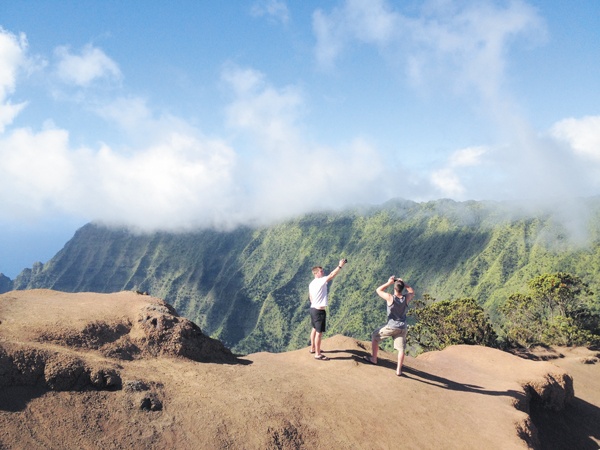LIHUE — The revised master plan for Kokee and Waimea Canyon state parks is back with the Department of Land and Natural Resources. “The ball is in the state’s court right now,” said Chipper Wichman, a member of the Kokee
LIHUE — The revised master plan for Kokee and Waimea Canyon state parks is back with the Department of Land and Natural Resources.
“The ball is in the state’s court right now,” said Chipper Wichman, a member of the Kokee State Park Advisory Council.
Whether the DLNR takes the council’s final recommendations to heart is yet to be seen.
For the last three months, the council’s Permitted Interaction Group — an investigative committee created during a June 12 meeting — has been reviewing important chapters of the plan and discussing additional changes with the DLNR’s Division of State Parks.
On Tuesday evening, after a lengthy discussion, the KSPAC adopted the PIG’s final report, opting not to support the controversial entry station.
“We formally transmitted our report to the state, which is an important detail as they can’t act on it without a formal transmittal,” said Wichman, who served as chair of the PIG.
The state has said it will need about one month to revise and finalize the plan. The KSPAC has scheduled its next meeting for 5 p.m. Nov. 6.
“The only agenda item we set is the review and approval of the final master plan,” he said. “We may approve sending it to the Board of Land and Natural Resources subject to certain conditioning that we will set after review the final master plan document.”
In light of overwhelming public opposition to the proposed entry station over the last 10 years, the PIG recommended Tuesday the state remove it from the plan altogether, citing a number of reasons.
“Funding for state parks is an obligation of the state of Hawaii and should come from tax revenue and not ‘user fees,’” the report said. “This is a public trust issue and the state government needs to step up and take responsibility for funding our parks at acceptable levels.”
The proposed entry station includes a 100-square-foot gated booth for collecting fees from non-residents only, as well as a roadside support building. It would be just above the junction of Waimea Canyon Drive and Kokee Road.
The PIG also said in its report that increasing funding via user fees would result in less funding from the Legislature over time, create an incentive to increase park visitation and negatively impact the park’s resources.
Wichman said the DLNR has agreed to look at alternative options for the entry station, including its proposed location, which residents have voiced would cause serious traffic.
Another major public sore spot over the years has been the state’s proposals at Waimea Canyon Lookout. After originally pushing for a souvenir shop, the state has backed off a bit. While the plan still calls for major improvements — including updated viewing platforms, restrooms and information kiosks — the souvenir shop has been replaced with a “concession area.”
The council agreed Tuesday the refreshments sold at the concession should be limited to zero waste snacks feature locally produced fruits and products, and that improvements to the lookout do not increase the current footprint by more than 30 percent.
“Since many visitors never go beyond this point, the structure envisioned for the new WCL should be developed as an ‘unmanned’ interpretive center that is located at the ‘plaza’ and which will feature educational information on the history, geology and environment of both Waimea Canyon and Kokee state parks,” the PIG wrote in its report.
One other major recommendation of the KSPAC is for the state to increase funding for natural resource protection and management within the parks, from $50,000 to $1.8 million.
Those funds would be used for projects and programs that focus on protection of native flora, fauna and their habitats, removal of invasive species, and protection of significant historic and cultural sites, according to the plan.
Wichman described the parks’ resources as “the goose that’s laying the golden egg.”
“That’s a critical element of any master plan,” he said. “Managing the resource.”
Tuesday’s meeting — the first since June — drew between 30 and 40 people to the National Tropical Botanical Garden headquarters building in Kalaheo.
Wichman said the finalized master plan from the state, expected to be complete in a month or so, will not be up for debate by the KSPAC, and that the final decision will be made by the BLNR.
• Chris D’Angelo, environmental reporter, can be reached at 245-0441 or cdangelo@thegardenisland.com.


